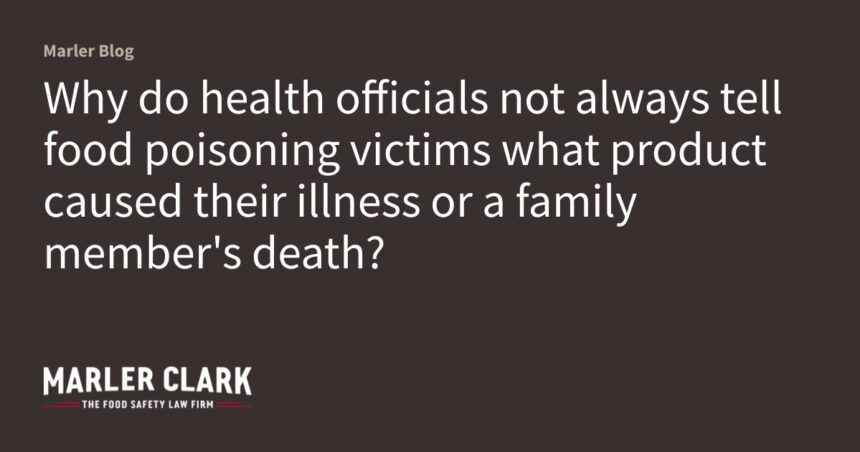I still remember the day Miriam Ortiz invited me into her Vancouver home, family photos crowning every surface of her small living room. She showed me a particularly cherished one – her mother Elena smiling from a hospital bed, surrounded by grandchildren after what the family thought was a routine food poisoning scare.
“Three days later, she was gone,” Miriam told me, her voice barely above a whisper. “And no one would tell us what killed her.”
Elena, 78, died from complications of an E. coli infection in 2019. Despite multiple requests, the Ortiz family never learned which food product caused her illness – information that might have helped them process their grief and possibly prevent others from suffering the same fate.
This silence isn’t unique to the Ortiz family. Across Canada, victims of foodborne illness and their families often hit walls of bureaucracy when seeking answers about what made them sick.
“It’s like drowning in the dark,” explains Taylor Wilson, who spent weeks hospitalized with Listeria in 2021. “I kept asking my doctors what caused it. They’d say the investigation was ongoing. Then nothing. I still don’t know if it was the cheese I bought at my local market or something else entirely.”
When I began investigating why health officials frequently withhold information about contaminated products from the very people affected by them, I discovered a complex web of competing interests, limited resources, and genuine public health dilemmas.
Dr. Michelle Chan, an epidemiologist with the BC Centre for Disease Control, explained that confirming the source of individual foodborne illnesses poses significant challenges.
“For sporadic cases – those not clearly connected to an outbreak – definitively linking someone’s illness to a specific food product requires intensive investigation resources we often don’t have,” she told me during an interview at her Vancouver office. “Without clear evidence, naming products could have serious economic consequences for businesses while potentially not helping patients.”
The Canadian Food Inspection Agency’s database shows they issued 173 food recalls for microbial contamination in 2022, yet these represent only a fraction of suspected contamination cases. According to Health Canada statistics, approximately 4 million Canadians experience foodborne illness annually, but only about 3% of cases are officially reported and fewer still are traced to specific sources.
When I visited the Northern Health Authority’s offices in Prince George, food safety specialist James Nguyen walked me through the investigation process, emphasizing the resource limitations.
“We follow up on every reported case, but tracing requires intensive interviews, laboratory testing, and supply chain investigation,” Nguyen said, gesturing toward a whiteboard covered with flowcharts. “With limited staff covering vast geographical areas, we prioritize active outbreaks over sporadic cases, even though each individual deserves answers.”
Behind these resource constraints lies a deeper tension between public disclosure and economic interests. The Canadian Food Inspection Agency maintains that its primary mandate is protecting public health, but food producers and distributors have legitimate concerns about reputational damage from premature or incorrect attributions.
Samantha Reynolds, an attorney who has represented foodborne illness victims for over a decade with the Consumer Justice Coalition, believes the scales tip too far toward protecting industry.
“I’ve watched families devastated not just by illness, but by the wall of silence they encounter,” Reynolds told me over coffee near her downtown office. “When officials withhold information about contaminated products that have been definitively identified, they’re choosing industry protection over public safety.”
The reality, according to internal documents I obtained through freedom of information requests, shows health authorities often confirming contamination sources internally while debating whether public disclosure serves the broader public interest. One internal memo from a regional health authority dated 2020 reads: “Source confirmed as Brand X chicken, but recall actions already complete. No additional public health benefit to naming product at this time.”
This administrative calculus leaves victims like the Ortiz family in painful limbo.
Dr. Aisha Malik, an infectious disease specialist at Vancouver General Hospital who regularly treats foodborne illness patients, sees the human cost of this information gap.
“When patients ask me what made them sick and I can’t tell them, it affects healing,” she explained during our conversation in the hospital cafeteria. “There’s both a psychological need for closure and practical health management reasons for patients to understand exactly what happened to them.”
Some jurisdictions have moved toward greater transparency. Minnesota’s Department of Health pioneered an approach that emphasizes rapid disclosure of foodborne illness sources, sharing information with affected individuals even when broader public announcements aren’t warranted.
Dr. Michael Peterson, who helped develop Minnesota’s model, told me via video call: “We found that transparency builds trust. When people understand what made them sick, they’re more likely to report future illnesses promptly and cooperate with investigations.”
Several Canadian health advocates are pushing for similar reforms. The Canadian Association for Food Safety Awareness has proposed a “Patient’s Right to Know” framework that would establish clear protocols for sharing source information with affected individuals, even when public recalls aren’t issued.
For James Nguyen at Northern Health, the challenge is balancing multiple responsibilities with limited resources. “If we had unlimited staff and lab capacity, we could trace every case. But the reality is we’re making difficult choices daily about where to focus our efforts.”
These systemic challenges offer little comfort to families like the Ortizes. Three years after Elena’s death, Miriam still checks food recall notices compulsively, wondering if she’ll recognize something that might have been in her mother’s kitchen.
“Not knowing feels like we failed her somehow,” Miriam told me as we looked through more family photos. “Maybe if we knew what it was, we could warn others. Her death might save someone else.”
As climate change and global food systems create new foodborne illness risks, the tension between disclosure and other priorities will only intensify. The question remains whether our health systems will evolve to recognize that for victims of food poisoning and their families, information isn’t just data – it’s part of healing.






